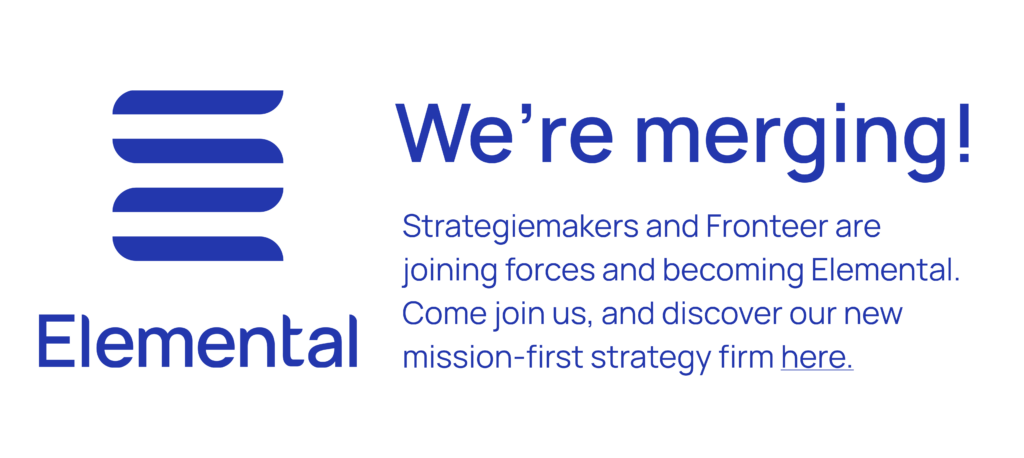“How do you like working from home?”
Nowadays the question comes up in every conversation. Besides the people with vital occupations and people who (can) choose to go to the office for a day, the vast majority of the Dutch workforce works from home. A lot is written and discussed about its advantages and disadvantages. It turns out to be personal preference for everyone: one is looking for the right work / life balance, the other uses the decreased travel time to exercise. But what almost everyone agrees on: we miss the spontaneous conversations at the coffee machine. Where does that need come from?
Casual encounters
The coffee machine symbolizes casual encounters. It is the place where you meet that one colleague that you have not seen for weeks and where, while the coffee is running, you find out that you are dealing with the same topic within the organization. It is the place where you complain about the workload together and then come up with a brilliant idea to reduce that workload. And it is the place where you can catch your breath between all that organizing and planning.
So these casual encounters really have a function and are part of the way we work. Research by the World Economic Forum shows that successful companies are increasingly open to and have an eye for casual encounters in the workplace. These companies are an example of how they value and use casual encounters. In the study, they indicate that there are tangible ways to organize those encounters. Examples are given such as randomly matching employees for lunch and reducing irrelevant information and unnecessary meetings.
While it may seem that these companies misuse casual encounters, they also see the added value of their social aspect. These are the moments that people appreciate in their job satisfaction scoring.
“Serendipity tends to happen when we open our eyes to the unexpected.” – WEF study
Collective disadvantage
However, those coffee machines have been standing still for weeks. There are also no spontaneous lunches and networking drinks. And we can safely say that this is experienced as a collective disadvantage. There is a need for that social cohesion, spontaneous contact with colleagues and joint (physical) space to brainstorm about a new proposition. This need in combination with what has happened to our agendas can be called paradoxical. Because now that the agendas are a lot emptier due to the disappearance of a lot of business and private activities, space is created for casual encounters. But above all, it cannot be used for business purposes because we cannot stand at the coffee machine together.
Creative initiatives
A number of companies have come up with creative (and digital) solutions for this, which are quite easy to implement. Remote is the standard at Groove,, a software company in customer communication. In their blog in which they write how they work remotely, they highlight the importance of the water cooler in an office:
“In a traditional office, the water cooler is the place where people talk about their personal lives. Where they “shoot the shit” and build relationships with the rest of the team. Water coolers matter. A lot. And if you want your remote team to have any semblance of camaraderie, you’d better provide a water cooler for them, too.” – Groove Blog
And so they created a channel within Slack called “water cooler” to start all those conversations that you normally have at the coffee machine, or in this case the water cooler.
Another example is from Basecamp, a software company that specializes in project management and team communication (where else would examples like these possibly come from). Once in a while Basecamp sends a random question around the team. Like, “What books are you reading?” or “When was the last time you did something for the first time?” or “What did you do last weekend?”. On their blog they write:
“These entirely optional questions are meant to shake loose some stuff that you’d love to share with everyone else, but you didn’t have an opportunity to do so. This kind of internal communication helps grease the social gears. This is especially useful for remote teams, like ours. When we know each other a little better, we work a little better together.” – Blog Basecamp
Doughnut coffee
Now that we are experimenting with asynchronous working within Strategiemakers, we have also started an initiative to maintain the coffee machine while we are not working from the Strategiefabriek. For example, within Slack, the communication channel that we use internally, we have added the “Donut” app. Every week we are randomly and automatically linked by this app to a colleague with whom we “eat a donut”, or in most cases drink a coffee remotely. In practice, you see that a lot of colleagues decide to go for a walk while calling, or at a distance of 1.5 meters or both in another place but calling synchronously. 😉

Whether it completely replaces the symbolic coffee machine is difficult to indicate. It is clear that it is a subject that concerns more companies. Let’s exchange these examples and learn from the insights we gain in them. And above all, don’t try too hard to organize casual encounters, because then you will neglect the whole principle about it.



